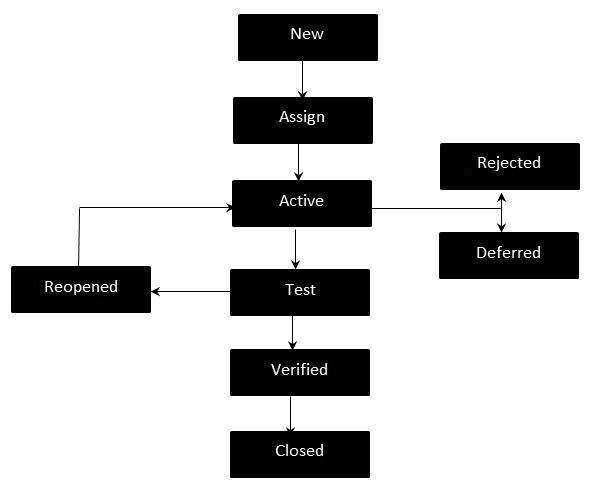
- STLC - Home
- STLC - Overview
- COMPARISON - STLC and SDLC
- Testing Fundamental Principles
- STLC - Requirement Analysis
- STLC - Entry and Exit Criteria
- STLC - Acceptance Criteria
- STLC - Test Planning
- STLC - Test Case Development
- STLC - Test Environment Setup
- STLC - Test Execution
- STLC - Defect Life Cycle
- STLC - Defect Classification
- STLC - Test Cycle Closure
STLC - Defect Life Cycle
Defect Life Cycle, also known as Bug Life Cycle, is the journey of a defect, the cycle which a defect goes through during its lifetime. It varies from organization to organization and also from project to project, as it is governed by the software testing process and also depends upon the tools used.
Defect Life Cycle Workflow
The following diagram shows the workflow of a Defect Life Cycle.

States of a Defect Life Cycle
Following are the different states of a Defect Life Cycle.
New − Potential defect that is raised and yet to be validated.
Assigned − Assigned against a development team to be addressed.
Active − The Defect is being addressed by the developer and investigation is under progress. At this stage, there are two possible outcomes Deferred or Rejected.
Test / Fixed / Ready for Retest − The Defect is fixed and ready for testing.
Verified − The Defect that is retested and the test has been verified by QA.
Closed − The final state of the defect that can be closed after the QA retesting or can be closed if the defect is duplicate or considered as NOT a defect.
Reopened − When the defect is NOT fixed, QA reopens/reactivates the defect.
Deferred − When a defect cannot be addressed in that particular cycle it is deferred to future release.
Rejected − A defect can be rejected for any of the three reasons duplicate defect, NOT a Defect, Non Reproducible.